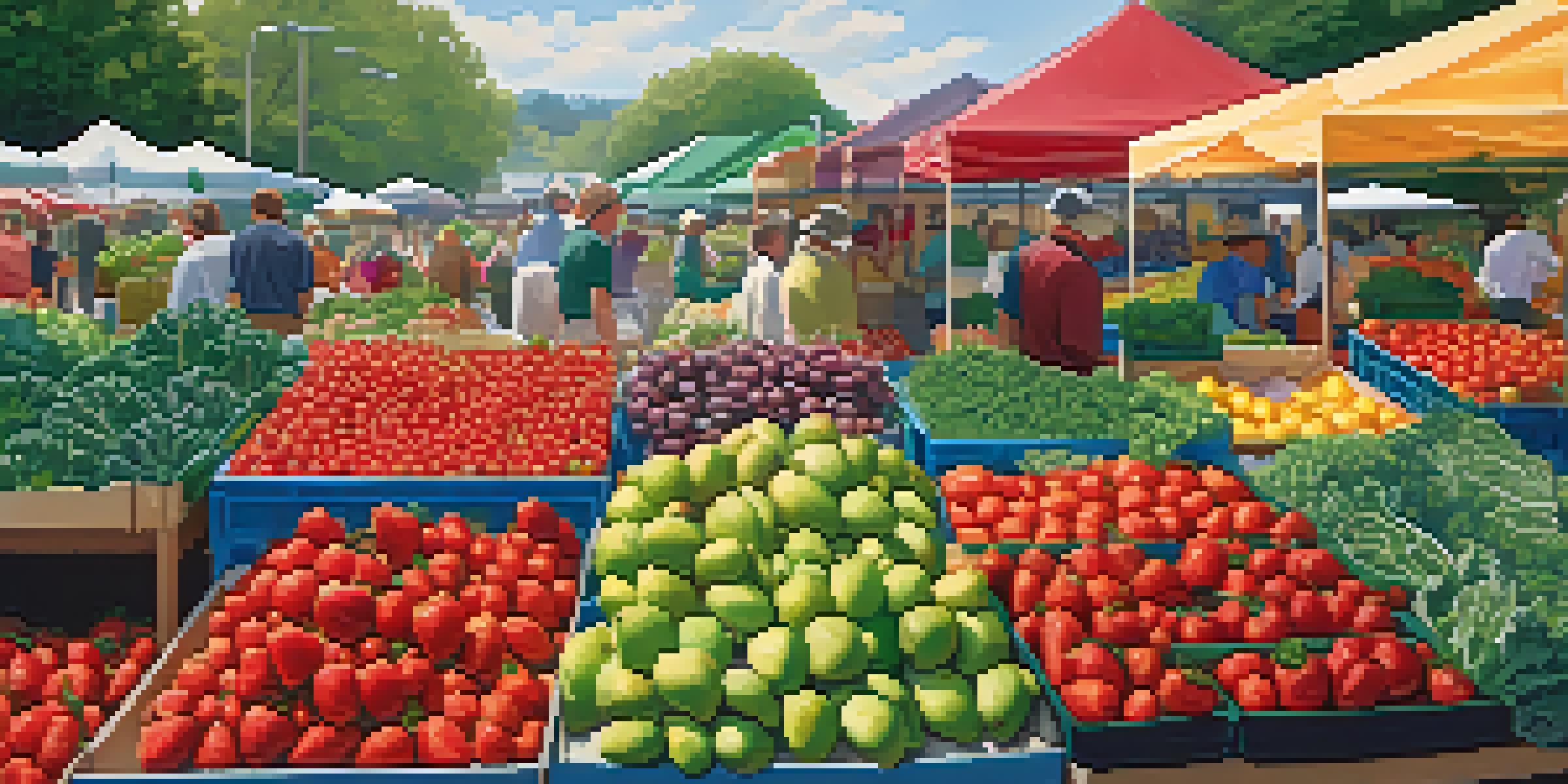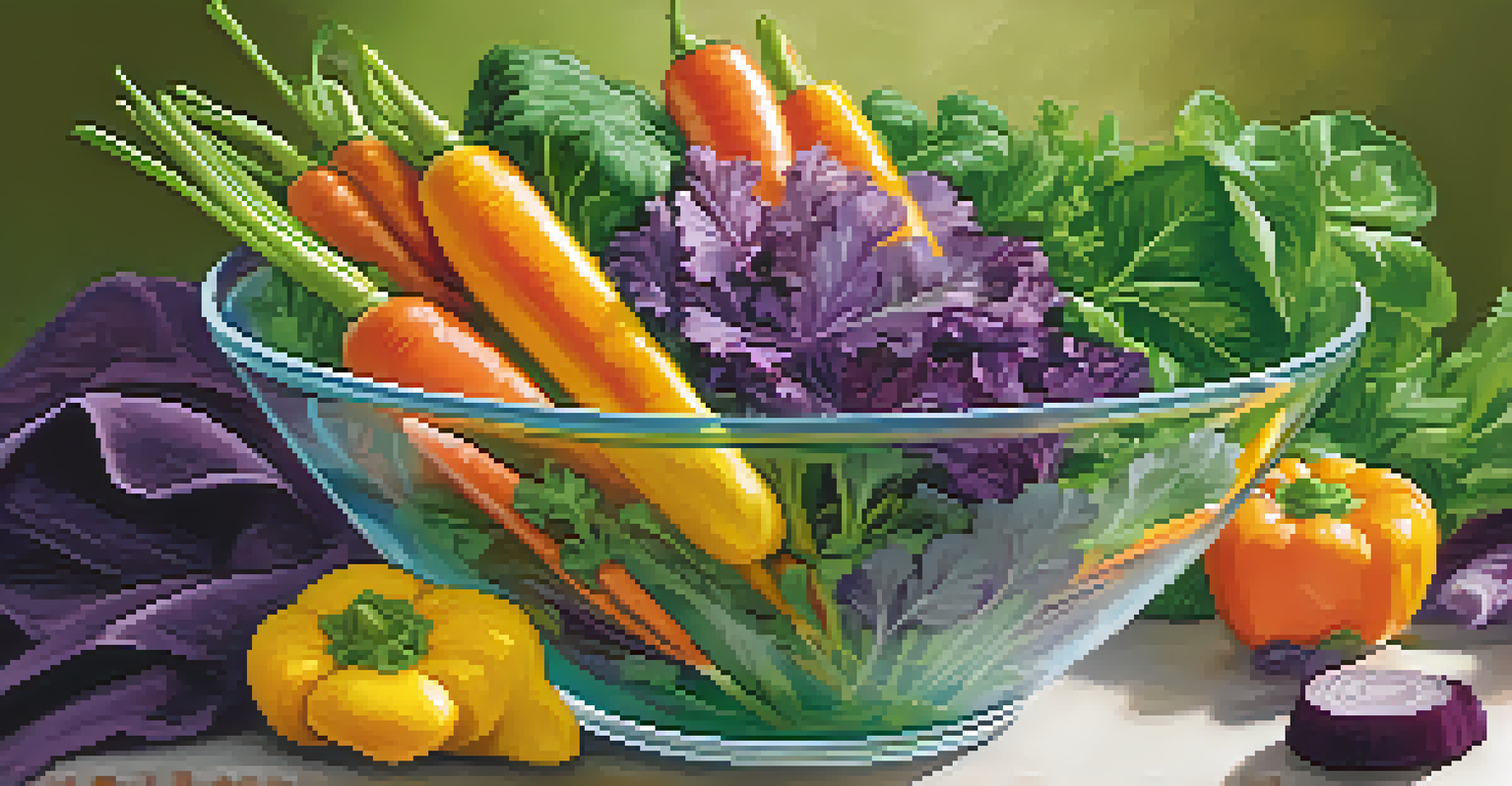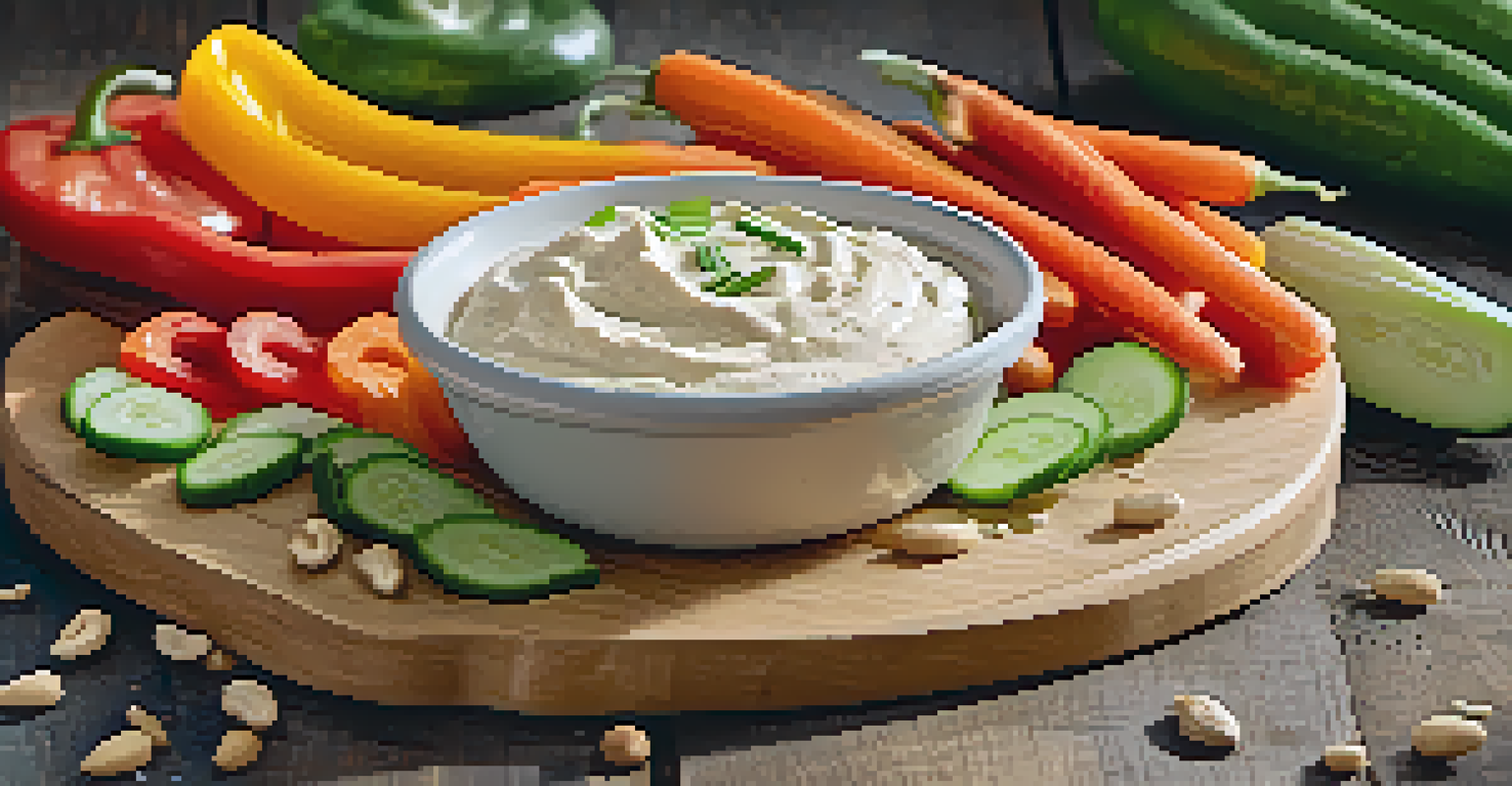Raw Food Ingredients: Nature's Palette for Culinary Art

Understanding Raw Food: The Basics of Culinary Art
Raw food cuisine emphasizes the use of uncooked, unprocessed ingredients, celebrating their natural flavors and nutrients. This culinary approach is rooted in the belief that cooking can diminish the nutritional value of food. By focusing on fresh fruits, vegetables, nuts, and seeds, raw food enthusiasts create dishes that are both wholesome and flavorful.
Let food be thy medicine and medicine be thy food.
Imagine walking through a vibrant farmer's market, where colorful produce beckons from every stall. Each item tells a story of its origin, from sun-ripened tomatoes to crisp greens. This connection to nature’s bounty is at the heart of raw culinary art, inviting chefs to explore the full spectrum of flavors and textures available in unaltered ingredients.
Raw food isn't just about health; it's also about creativity in the kitchen. Chefs can experiment with various combinations and presentations, transforming simple ingredients into stunning works of art that are as pleasing to the eye as they are to the palate.
The Colors of Nature: Fruits and Vegetables as Art Supplies
Fruits and vegetables are the paint and canvas of the raw food world, offering a dazzling array of colors, shapes, and flavors. From bright red strawberries to deep green kale, these ingredients can be mixed and matched to create visually stunning dishes. The aesthetic appeal of food is an essential part of the dining experience, and raw ingredients naturally lend themselves to colorful presentations.

Consider a vibrant salad that features a rainbow of vegetables, each contributing its unique hue and taste. The combination of sweet, spicy, sour, and earthy flavors not only tantalizes the taste buds but also nourishes the body. This playful approach to combining colors can inspire anyone to eat healthier by making raw food more enticing.
Raw Food Celebrates Natural Flavors
Raw food cuisine emphasizes the use of uncooked, unprocessed ingredients, focusing on their natural flavors and nutritional benefits.
Moreover, using seasonal produce allows for a continually evolving color palette in your dishes. As the seasons change, so does the availability of fruits and vegetables, encouraging creativity and experimentation in the kitchen.
Nuts and Seeds: The Foundation of Raw Culinary Creations
Nuts and seeds are the unsung heroes of raw food preparation, providing essential nutrients, healthy fats, and satisfying crunch. They can be used in a variety of ways, from creamy nut butters to crunchy toppings for salads. Incorporating these ingredients into raw dishes can elevate them, adding depth and complexity of flavor.
The food you eat can be either the safest and most powerful form of medicine or the slowest form of poison.
Think of a rich, creamy cashew cheese spread that enhances a fresh vegetable platter or a sprinkle of hemp seeds that adds a delightful texture to a smoothie. These versatile ingredients not only contribute to the taste but also enhance the nutritional profile of any dish. They are packed with protein, fiber, and various vitamins and minerals, making them an excellent addition to a raw diet.
Additionally, nuts and seeds can be used to create raw desserts that satisfy sweet cravings while still being healthy. From raw energy balls to chocolate avocado mousse, the possibilities are endless, ensuring that raw food can be just as indulgent as it is nutritious.
Herbs and Spices: Enhancing Raw Dishes with Flavor
Herbs and spices are the secret weapons in a raw chef's arsenal, transforming simple ingredients into flavorful masterpieces. Fresh herbs like basil, cilantro, and mint can brighten up a dish, while spices such as cumin and paprika can add warmth and depth. These flavor boosters are essential for creating well-rounded raw meals that excite the palate.
Imagine a zesty raw salsa made with ripe tomatoes, fresh cilantro, and a squeeze of lime juice. This dish showcases how herbs can elevate the natural flavors of raw ingredients, making them sing on the plate. By experimenting with different combinations, you can discover new flavor profiles that enhance your culinary creations.
Visual Appeal Enhances Dining Experience
Creative presentation of raw dishes using vibrant colors and textures can make meals more enticing and enjoyable.
Moreover, many herbs and spices boast health benefits, adding another layer of nourishment to your raw dishes. Incorporating these elements not only enhances taste but also promotes overall well-being, making every meal a delightful experience for both the body and mind.
Superfoods: The Power Players in Raw Cuisine
Superfoods are nutrient-dense ingredients that can take your raw food creations to the next level. Items like chia seeds, spirulina, and acai berries are packed with vitamins, minerals, and antioxidants, making them popular choices in raw diets. Incorporating these superfoods can enhance both the nutritional value and the visual appeal of your dishes.
For instance, a smoothie bowl topped with vibrant acai puree and sprinkled with chia seeds is not only visually stunning but also incredibly nourishing. These powerful ingredients provide an extra boost that can support overall health, making raw food both delicious and beneficial.
Additionally, superfoods often come with unique flavors and textures that can inspire creativity in the kitchen. By experimenting with these ingredients, you can discover new combinations that excite your taste buds and enrich your raw culinary repertoire.
Creative Presentation: Making Raw Food Visually Appealing
The presentation of raw food can be as important as the taste, and creativity plays a vital role in making dishes visually appealing. Using techniques like layering, spiraling, and stacking can transform ordinary ingredients into eye-catching arrangements. A well-presented dish can elevate the dining experience and encourage people to appreciate raw food.
Imagine a colorful raw lasagna, where layers of zucchini, vibrant tomatoes, and creamy nut cheese are artfully arranged. This approach not only showcases the beauty of the ingredients but also invites diners to explore the textures and flavors within each layer. Presentation can turn a simple meal into a memorable experience that delights all the senses.
Nutrient-Dense Superfoods Boost Meals
Incorporating superfoods like chia seeds and acai berries into raw dishes not only enhances nutrition but also adds unique flavors.
Moreover, incorporating natural elements like edible flowers or fresh herbs as garnishes can add an extra touch of elegance. By focusing on the visual aspect of raw food, chefs can inspire others to embrace this culinary art and enjoy the health benefits that come with it.
Embracing Raw Food: A Journey of Culinary Exploration
Embracing raw food is not just about dietary choices; it's a journey of culinary exploration that encourages creativity and experimentation. As you dive into the world of raw ingredients, you'll discover endless opportunities to create dishes that are both beautiful and nutritious. This approach invites a playful mindset, allowing chefs and home cooks alike to enjoy the process of cooking without the constraints of traditional methods.
Consider starting your raw food journey with simple recipes that highlight seasonal ingredients. This not only helps you learn the basics but also allows you to appreciate the vibrant flavors that raw food has to offer. As you gain confidence, you can experiment with more complex dishes, incorporating new techniques and ingredients.

Ultimately, embracing raw food can lead to a deeper connection with the ingredients you use and the meals you create. It encourages mindfulness in cooking and eating, fostering a greater appreciation for the beauty of nature’s palette.